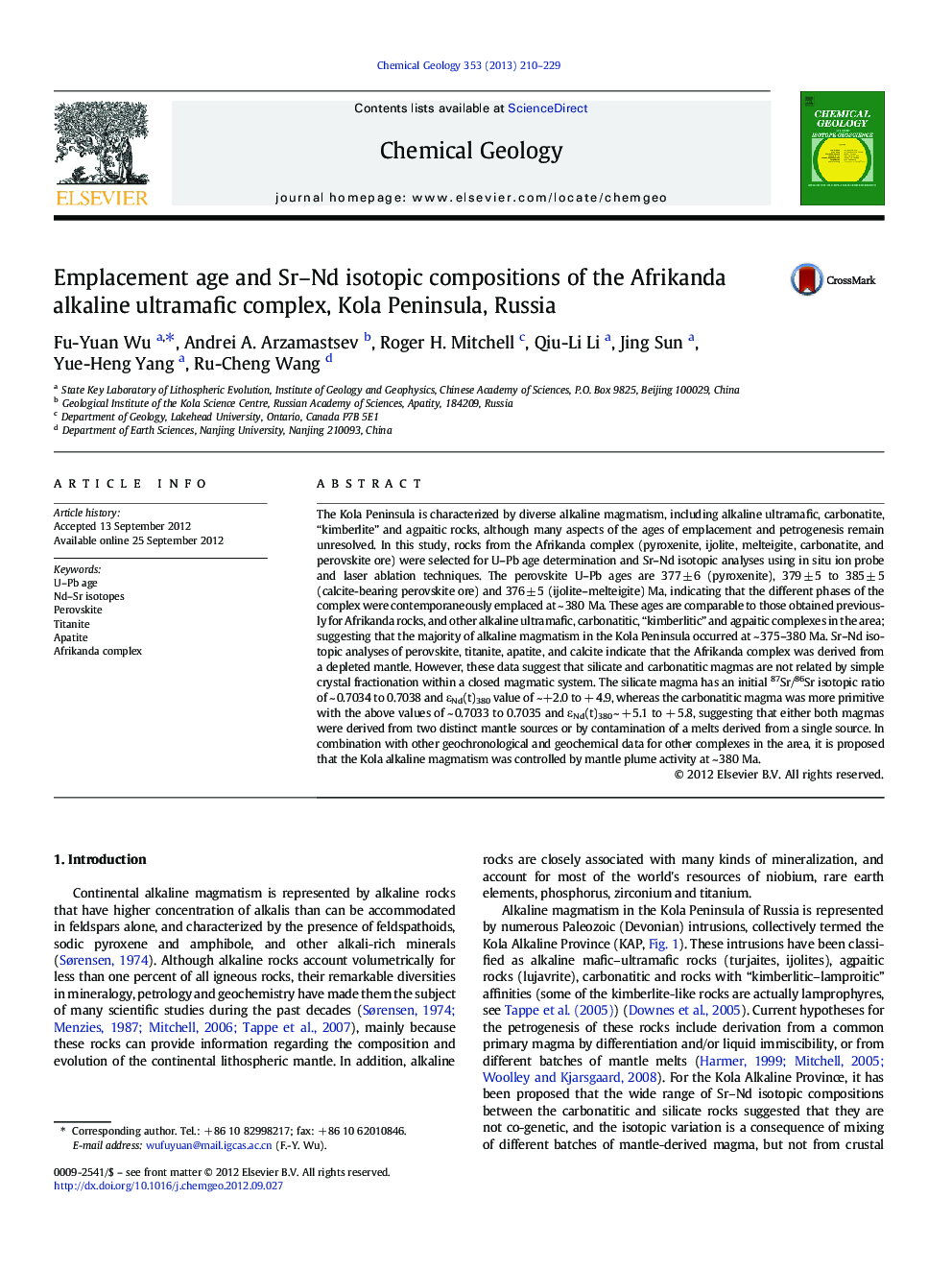| کد مقاله | کد نشریه | سال انتشار | مقاله انگلیسی | نسخه تمام متن |
|---|---|---|---|---|
| 4698940 | 1637616 | 2013 | 20 صفحه PDF | دانلود رایگان |

The Kola Peninsula is characterized by diverse alkaline magmatism, including alkaline ultramafic, carbonatite, “kimberlite” and agpaitic rocks, although many aspects of the ages of emplacement and petrogenesis remain unresolved. In this study, rocks from the Afrikanda complex (pyroxenite, ijolite, melteigite, carbonatite, and perovskite ore) were selected for U–Pb age determination and Sr–Nd isotopic analyses using in situ ion probe and laser ablation techniques. The perovskite U–Pb ages are 377 ± 6 (pyroxenite), 379 ± 5 to 385 ± 5 (calcite-bearing perovskite ore) and 376 ± 5 (ijolite–melteigite) Ma, indicating that the different phases of the complex were contemporaneously emplaced at ~ 380 Ma. These ages are comparable to those obtained previously for Afrikanda rocks, and other alkaline ultramafic, carbonatitic, “kimberlitic” and agpaitic complexes in the area; suggesting that the majority of alkaline magmatism in the Kola Peninsula occurred at ~ 375–380 Ma. Sr–Nd isotopic analyses of perovskite, titanite, apatite, and calcite indicate that the Afrikanda complex was derived from a depleted mantle. However, these data suggest that silicate and carbonatitic magmas are not related by simple crystal fractionation within a closed magmatic system. The silicate magma has an initial 87Sr/86Sr isotopic ratio of ~ 0.7034 to 0.7038 and εNd(t)380 value of ~+2.0 to + 4.9, whereas the carbonatitic magma was more primitive with the above values of ~ 0.7033 to 0.7035 and εNd(t)380 ~ + 5.1 to + 5.8, suggesting that either both magmas were derived from two distinct mantle sources or by contamination of a melts derived from a single source. In combination with other geochronological and geochemical data for other complexes in the area, it is proposed that the Kola alkaline magmatism was controlled by mantle plume activity at ~ 380 Ma.
► Perovskite U–Pb ages are determined for the alkaline Afrikanda complex in Russia.
► The various phases were synchronously emplaced at ~ 380 Ma.
► Sr–Nd isotopic data suggest that the magma was derived from depleted mantle.
► The Kola Paleozoic magmatism was triggered by mantle plume activity.
Journal: Chemical Geology - Volume 353, 30 August 2013, Pages 210–229